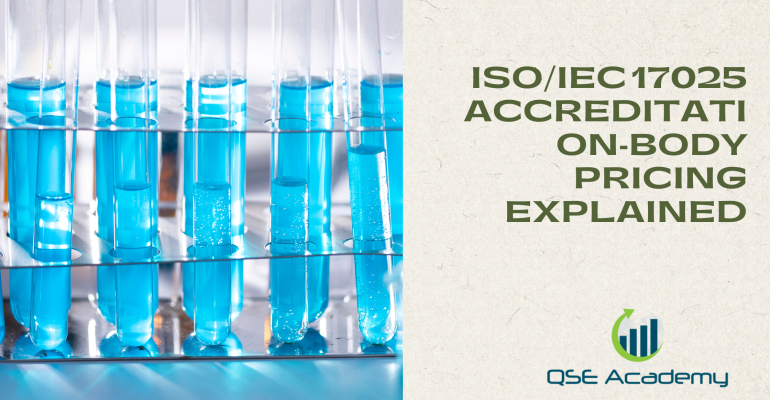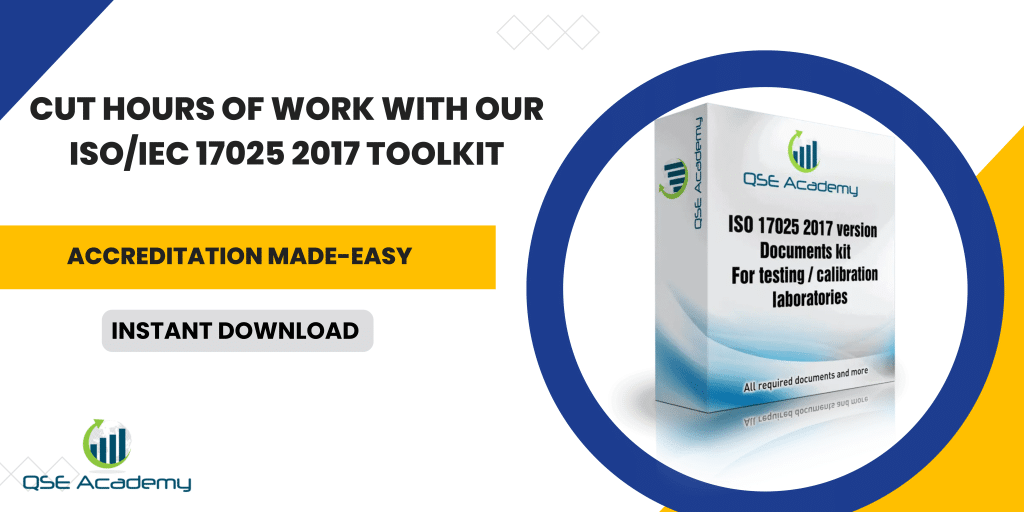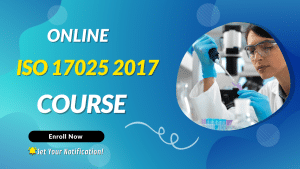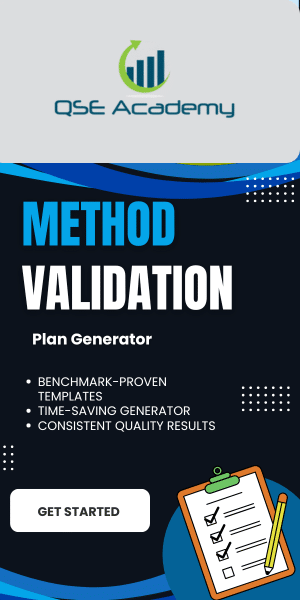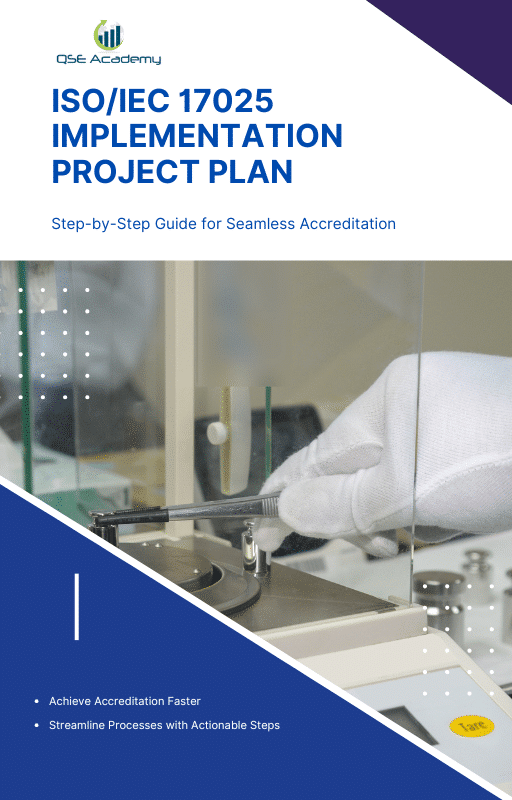ISO/IEC 17025 Accreditation‑Body Pricing Explained
Last Updated on October 13, 2025 by Melissa Lazaro
Understanding the Real Cost of ISO/IEC 17025 Accreditation
If you’ve ever tried to get a clear answer on how much ISO/IEC 17025 accreditation actually costs, you’ve probably heard, “It depends.”
And that’s true—but it doesn’t help you budget.
Over the years, I’ve helped labs of every size—from small calibration outfits to full-blown analytical testing facilities—navigate the accreditation maze. What I’ve noticed is that most labs underestimate both the direct and hidden costs involved. Not because they’re careless, but because pricing isn’t always transparent. Accreditation bodies use different fee structures, and what looks affordable at first often doubles once travel, reassessments, and document reviews are added in.
This guide breaks it all down for you.
You’ll learn:
-
How accreditation bodies calculate their pricing
-
What cost factors you can control
-
Common traps that inflate your final bill
-
Practical tips to budget smart—without cutting corners
By the end, you’ll not only understand what you’re paying for, but you’ll be able to plan confidently—and avoid those last-minute financial surprises that can stall your accreditation timeline.
What Determines ISO/IEC 17025 Accreditation Pricing
Here’s the truth: there’s no one-size-fits-all price tag for ISO/IEC 17025 accreditation. The cost depends entirely on your lab’s size, scope, and how prepared you are when the assessors arrive. I’ve seen two labs in the same industry pay very different amounts—one sailed through with minimal follow-ups, the other spent double fixing gaps they didn’t spot early on.
Let’s break down what drives your cost.
1. Scope and Type of Services
The broader your testing or calibration range, the higher the cost.
Every additional method, parameter, or matrix adds audit time.
For example, a mechanical calibration lab handling torque, pressure, and dimensional checks will pay more than a lab focusing solely on temperature.
Pro tip: Keep your initial scope lean. You can always expand once you’re accredited.
2. Number of Locations and Staff
Multi-site operations or labs with multiple departments mean more assessor days.
Assessors need time to verify each site’s equipment, procedures, and records. Even a small satellite lab can add travel days and per-diem expenses.
Common pitfall: Forgetting to mention all your testing sites in the application. Accreditation bodies will adjust the cost later—and not in your favor.
3. Complexity of Test Methods
Simple gravimetric or visual inspections take less audit time than sophisticated chromatographic or electrical methods.
If your lab uses advanced instrumentation, expect assessors with specialized expertise (and higher rates).
Here’s what I’ve noticed: Labs that clearly document method validation and uncertainty calculations tend to finish audits faster—and time literally equals money in this process.
4. Level of Readiness
This is the big one.
A well-organized lab with complete documentation, clear traceability, and trained staff can save thousands.
Accreditation bodies charge by the day, so every hour wasted clarifying gaps costs you.
Pro tip: Run an internal mock audit before the real one. It’s the best way to predict how many days your assessment might take.
5. Accreditation Body and Region
Rates vary depending on where you’re located and which body you choose.
Some national bodies like SANAS, ANAB, or UKAS publish their rates; others require a quote.
Travel costs, local taxes, and assessor availability all influence pricing.
Bottom line:
The more prepared and focused your lab is, the less time assessors spend on-site—and the lower your total cost. Preparation isn’t just about compliance; it’s a financial strategy.
Breaking Down Typical Accreditation Fees
Once you’ve sent in your application, the pricing details can feel like alphabet soup—application fees, daily assessor rates, surveillance charges, and re-assessment costs. Let’s unpack what each of these actually means so you know where your money goes.
1. Application & Document Review Fees
This is your entry ticket.
When you first apply, the accreditation body charges a flat fee to review your submission and documentation. They’ll assess whether your lab is even ready for a full audit.
For most bodies, this is a one-time charge—often between USD 500 to USD 1,500, depending on complexity.
Pro tip: The cleaner and more organized your documents, the faster this stage moves—and the fewer follow-up hours you’re billed for.
2. Assessment or Auditor-Day Fees
This is the big-ticket item.
Accreditation bodies charge per assessor day—meaning the number of assessors × the number of days they spend reviewing your lab.
For example, if your lab needs:
-
One lead assessor for 3 days
-
One technical assessor for 2 days
-
And their daily rate is USD 500 each
That’s roughly USD 2,500 in assessor fees alone.
In my experience: Well-prepared labs can often cut the audit duration by a day—saving hundreds or even thousands.
3. Travel and Accommodation Expenses
If assessors have to travel to your site, you cover it—flights, mileage, hotel, and meals.
For labs in remote areas, this adds up fast.
Some accreditation bodies let you choose assessors closer to your region to minimize this.
Pro tip: Always request local assessors if available. It’s one of the simplest ways to trim your bill.
4. Annual Maintenance or Surveillance Fees
Accreditation isn’t a one-and-done deal.
Most bodies conduct annual or biannual surveillance visits to ensure continued compliance.
Expect USD 1,000–3,000 per year, depending on the scope and number of assessors involved.
This is often where labs get surprised—the initial accreditation fee is only half the story.
5. Reassessment or Extension Fees
If you expand your scope (say, adding new parameters or instruments), you’ll need a re-assessment.
Each additional method usually adds assessor time and possibly another technical expert.
Common pitfall: Expanding scope too soon. Wait until your system has matured; otherwise, you’re paying for multiple partial assessments.
Here’s a quick snapshot for context:
| Fee Type | Purpose | Typical Range (USD) |
|---|---|---|
| Application Review | Initial document evaluation | 500 – 1,500 |
| Assessment (per assessor-day) | On-site evaluation | 400 – 800 |
| Travel & Logistics | Assessor expenses | 300 – 1,000+ |
| Annual Surveillance | Ongoing compliance check | 1,000 – 3,000 |
| Scope Extension | New test methods added | Varies |
In short: Accreditation costs are layered. Understanding each fee upfront helps you ask the right questions and avoid sticker shock later.
Hidden Costs Labs Often Overlook
Here’s what most labs miss: the biggest expenses in ISO/IEC 17025 accreditation often don’t come from the accreditation body. They come from inside your own operation.
I’ve seen labs budget perfectly for the audit—then scramble when they realize how much internal preparation actually costs.
Let’s unpack those “invisible” line items that can quietly inflate your total spend.
1. Internal Preparation and Staff Time
Every hour your quality manager, technicians, or analysts spend preparing for accreditation is time not spent on billable lab work.
Between updating SOPs, organizing calibration certificates, and preparing uncertainty budgets, those hours add up fast.
Example: One small calibration lab I worked with underestimated staff time by nearly 200 hours during their first accreditation cycle. When they tracked it afterward, internal costs equaled almost half their external audit fees.
Pro tip: Treat internal preparation as part of your accreditation budget—not an afterthought.
2. Equipment Calibration and Maintenance
Before assessors arrive, all your reference standards and critical instruments need up-to-date calibration certificates—traceable to national or international standards.
If you discover an expired certificate too late, you’ll rush to recalibrate, often paying premium turnaround fees.
In my experience: It’s always cheaper to plan recalibration schedules 2–3 months ahead of your expected audit date.
3. Corrective Actions and Re-Assessments
Even the best-prepared labs receive nonconformities. The catch? Correcting them can cost money.
Whether it’s retraining staff, recalibrating an instrument, or updating documentation, each corrective action can carry indirect costs.
Common pitfall: Leaving corrective actions incomplete until the last minute. Accreditation bodies often charge for additional review time—or even a follow-up visit—if they need to verify corrections on-site.
4. Training and Competency Programs
Assessors always look for documented proof that your personnel are competent for their assigned tasks.
If you haven’t conducted recent internal audits, method verification, or measurement uncertainty training, you might need to schedule those before assessment day.
Pro tip: Budget for annual training refreshers. It’s cheaper to maintain competency than to fix gaps under audit pressure.
5. Consultant and Documentation Support
If your team’s new to ISO/IEC 17025, hiring a consultant or purchasing ready-to-use documentation templates can be a lifesaver—but it’s another cost line.
Still, this investment usually pays for itself by preventing repeat assessments and saving weeks of document drafting.
Example: One of my clients used a complete documentation package instead of starting from scratch. Their total consulting hours dropped by 40%, cutting the overall cost by nearly USD 3,000.
Bottom line:
Hidden costs don’t show up on the invoice from your accreditation body—but they can double your actual spend if you don’t plan ahead. Think of accreditation as a project, not just an audit. Budget for both the internal work and the external evaluation.
Comparing Different Accreditation Bodies’ Pricing Models
Not all accreditation bodies price the same way—and that’s where many labs get confused.
Even if two bodies assess you under the same ISO/IEC 17025 standard, their cost structures, billing methods, and assessor rates can differ dramatically.
I’ve seen labs save thousands simply by choosing an accreditation body whose pricing model fit their operational setup better.
Let’s walk through how these models typically vary.
1. Flat Fee vs. Assessor-Day Models
Some accreditation bodies use a flat-rate structure—you pay a set fee based on your lab size or scope. Others charge per assessor-day, meaning your final invoice depends on how long assessors spend reviewing your lab.
Example:
-
Flat fee: USD 6,000 for the entire process, regardless of assessor hours.
-
Assessor-day model: USD 500/day × 4 days × 2 assessors = USD 4,000—but that can increase if extra time is needed.
Pro tip: If your lab is well-prepared, the assessor-day model often works in your favor. But if you’re still building your system, a flat-rate structure may help you control costs.
2. Travel and Regional Variations
Accreditation bodies differ in how they handle travel costs.
Some include it in their day rate, while others bill it separately—sometimes at surprisingly high rates.
And geography matters. Assessments conducted in remote or cross-border areas will always cost more.
Example:
A lab in a major city might only pay local assessor rates. But a similar lab located a few hours away could face extra travel days and hotel costs—easily adding another USD 1,000 or more.
3. Local vs. International Accreditation Bodies
Let’s compare a few of the most recognized accreditation bodies and their pricing tendencies:
| Accreditation Body | Typical Base Fee | Assessor Rate (USD/day) | Surveillance Frequency | Notes |
|---|---|---|---|---|
| SANAS (South Africa) | ~3,000 | ~400 | Annual | Travel billed separately |
| ANAB (USA) | ~4,500 | ~500 | Annual | Offers remote pre-assessments |
| UKAS (UK) | ~3,000+ | ~450 | Annual | Transparent online fee guides |
| NABL (India) | ~2,000 | ~350 | Biannual | Lower fees, longer processing time |
| DAkkS (Germany) | ~5,000 | ~550 | Annual | High technical scrutiny |
Pro tip: Always confirm whether the body is an ILAC MRA signatory—that’s what ensures your accreditation is internationally recognized. Going with a cheaper, non-signatory body might save you money now but limit your recognition later.
4. Frequency of Surveillance and Reassessments
Some bodies conduct annual surveillance visits, while others do them every 18 or 24 months.
At first glance, that might not sound like much—but if surveillance is annual, that’s a recurring yearly cost you need to plan for.
Common pitfall: Forgetting to include surveillance fees in your long-term budget. Accreditation isn’t a one-time cost—it’s a continuous investment.
5. Transparency of Pricing Information
Accreditation bodies differ in how clearly they communicate pricing.
Bodies like UKAS and ANAB publish fee schedules publicly. Others, like SANAS or DAkkS, prefer case-by-case quotations.
Pro tip: Request a written quotation before applying. It not only helps you compare bodies fairly but also ensures no hidden fees appear later.
Here’s the takeaway:
Price shouldn’t be the only factor when choosing an accreditation body. Recognition, expertise in your field, and audit approach matter just as much. But understanding how each one prices its services will help you make an informed—and financially smart—decision.
How to Reduce ISO/IEC 17025 Accreditation Costs
Every lab wants the same thing—quality results, recognized competence, and an accreditation bill that doesn’t make the finance team panic.
The good news? You can absolutely control parts of your cost. Over the years, I’ve seen smart planning and preparation cut total accreditation expenses by 20–40%.
Here’s how to make that happen.
1. Start with a Gap Analysis
Before you even contact an accreditation body, do a deep dive into where your system stands.
A gap analysis helps identify missing procedures, unclear records, or outdated calibration certificates—long before assessors start the clock.
Pro tip: Fixing issues before the audit costs a fraction of what it does during the audit.
Example: One lab I worked with spent USD 800 on an internal pre-assessment instead of waiting for the accreditation audit. That small investment saved them nearly USD 3,000 in additional assessor days.
2. Narrow Your Initial Scope
You don’t need to accredit every method on day one.
Start with your core, high-demand services—the ones that define your reputation and bring steady business. Once accredited, expanding scope later is simpler and cheaper.
Common mistake: Trying to accredit all test methods at once. It sounds ambitious, but it often doubles the audit time (and cost).
3. Use Pre-Assessment or Mock Audits
Most accreditation bodies offer a pre-assessment service. It’s optional but worth it.
It helps identify gaps in documentation, staff competence, and technical areas before the formal assessment begins.
In my experience: Labs that take advantage of pre-assessments consistently have smoother audits and fewer nonconformities.
4. Streamline Documentation
Accreditation bodies charge based on time—and nothing slows assessors down like disorganized or inconsistent documentation.
Use a standardized documentation system or templates that align with ISO/IEC 17025 requirements.
Pro tip: QSE Academy’s documentation packages, for example, are designed to mirror the ISO/IEC 17025 structure. They save you weeks of drafting and reduce review hours—directly cutting audit costs.
5. Train Your Team Early
Your staff should be confident answering auditor questions about methods, traceability, and uncertainty.
When assessors see unsure or inconsistent answers, they probe deeper—which adds time.
Pro tip: Conduct internal training sessions before the audit. Even a one-day refresher can shave hours off the assessment.
6. Maintain Equipment and Records Proactively
Nothing frustrates assessors more than missing calibration records or expired equipment certificates.
Keep a clear calibration schedule and verify traceability links to national standards well before the audit date.
Example: One lab built a simple spreadsheet tracker for calibrations and reduced last-minute fixes to zero during their surveillance visit. Their audit ended half a day early—saving them USD 400 in assessor fees.
Bottom line:
Cost reduction doesn’t come from cutting corners—it comes from preparation and consistency. The more ready, organized, and confident your lab is, the less time assessors need to confirm compliance. And in ISO/IEC 17025, time is money.
When to Hire a Consultant (and What It Costs)
Some labs can handle ISO/IEC 17025 preparation on their own. Others hit a wall—too many documents to create, too many technical questions to answer, too little time before the client deadline.
That’s usually when a consultant becomes not just helpful, but cost-effective.
I’ve worked with labs that brought in consultants late in the process, only after failing a pre-assessment or receiving a long list of nonconformities. By then, costs had already doubled. Hiring the right help early can save you serious time, money, and frustration.
1. What Consultants Actually Do
A good ISO/IEC 17025 consultant doesn’t just hand you templates—they guide you through the why behind every clause.
Here’s what they typically help with:
-
Conducting a gap analysis to identify missing elements
-
Writing or revising quality manuals, SOPs, and records
-
Training staff on competence, uncertainty, and internal audits
-
Coaching teams through pre-assessment and corrective actions
Pro tip: Look for consultants who’ve worked with your chosen accreditation body before. They know what that body focuses on and can tailor your prep accordingly.
2. Average Consultant Pricing
Consulting fees vary depending on the level of support you need:
| Service Type | Typical Range (USD) | What’s Included |
|---|---|---|
| Documentation Package | 1,500 – 3,000 | Ready-to-use manuals, SOPs, forms |
| Partial Consulting | 3,000 – 6,000 | Gap analysis, document customization, training |
| Full Implementation | 5,000 – 10,000+ | End-to-end guidance until accreditation |
In my experience: Labs that combine pre-written templates with targeted consulting save both time and money. They don’t reinvent the wheel—but they still get a system tailored to their needs.
3. When It’s Worth Hiring Help
If any of these sound familiar, it might be time to bring in support:
-
You’re new to ISO/IEC 17025 and unsure where to start.
-
Your quality manager wears too many hats already.
-
You’ve failed a pre-assessment or audit before.
-
Your clients are pushing for accreditation ASAP.
Remember, consultants don’t replace your team—they accelerate them.
Pro tip: Ask for a clear scope of work and deliverables. You don’t want open-ended hourly billing; you want defined results.
4. What to Avoid
Not all consultants are equal.
Watch out for those who:
-
Promise “guaranteed accreditation” (no one can).
-
Push a one-size-fits-all system.
-
Don’t understand your industry’s test methods.
Real-world example:
A calibration lab once hired a consultant who had only worked with chemical testing facilities. The result? Dozens of irrelevant procedures—and a 6-month delay fixing everything. Always verify experience in your field.
Bottom line:
Hiring a consultant is an investment, not an expense. The right one saves you weeks of work, helps you avoid costly mistakes, and can make your first accreditation audit almost stress-free.
FAQs – ISO/IEC 17025 Accreditation Cost Questions
By now, you’ve got a solid understanding of what affects accreditation pricing and how to manage it. But a few questions always come up—especially from labs going through this for the first time.
Here are the ones I hear most often.
1. Is ISO/IEC 17025 accreditation really worth the cost?
Absolutely—and not just for the certificate.
Accreditation proves technical competence and builds trust with clients and regulators. Many industries now require it just to bid on contracts or issue valid calibration certificates.
In short, it pays off through credibility, new business, and long-term savings on rework or disputes.
In my experience: The labs that treat accreditation as an investment—rather than a compliance checkbox—see it return value every single year.
2. Can I estimate my accreditation cost before applying?
Yes. Most accreditation bodies, like SANAS or ANAB, can provide a pre-application quotation once you share your scope and lab details.
It won’t be exact, but it’ll give you a reliable estimate. You can also compare it with quotes from other bodies to see which fits your budget.
Pro tip: Always ask for a detailed cost breakdown—application, assessor-day rate, travel, and surveillance. Transparency now prevents surprise invoices later.
3. What’s the cheapest way to get accredited without cutting corners?
The key is preparation, not shortcuts.
Here’s the formula I’ve seen work repeatedly:
-
Start with a gap analysis
-
Use structured documentation templates
-
Train your team before the audit
-
Keep your initial scope small
This way, your audit runs smoothly and assessors don’t spend extra days finding missing pieces.
Example: A small calibration lab I helped used a hybrid approach—documentation package plus two days of consulting. They achieved accreditation in under six months and spent less than half of what a full consulting project would’ve cost.
4. How much should I budget for ongoing costs?
Plan for annual surveillance fees and periodic scope expansions. A good rule of thumb:
Expect about 20–30% of your initial accreditation cost every year for surveillance and maintenance.
5. Can I change accreditation bodies later if I find a cheaper one?
Technically yes, but it’s rarely worth it. Switching bodies means starting over—new applications, document reviews, and assessments. You’d likely pay almost as much as you did the first time.
Bottom line:
Accreditation costs are manageable when you plan strategically. The best way to save isn’t by chasing the lowest quote—it’s by being the most prepared lab in the room.
Smart Budgeting for ISO/IEC 17025 Accreditation
ISO/IEC 17025 accreditation isn’t cheap—but it’s not unpredictable either.
When you understand how pricing works, you’re no longer at the mercy of “it depends.” You can plan, prioritize, and make smart choices that save time and money without compromising quality.
In my years working with labs worldwide, I’ve seen one clear pattern: the best-performing labs don’t spend less—they spend smarter. They prepare early, document thoroughly, and treat accreditation as part of their business strategy, not just a compliance hurdle.
Here’s what to take away:
-
Know your cost drivers. Scope, readiness, and assessor time matter most.
-
Plan for hidden expenses. Internal labor, equipment calibration, and corrective actions add up.
-
Compare accreditation bodies wisely. Don’t choose the cheapest—choose the one that aligns with your goals and recognition needs.
-
Invest in preparation. Gap analyses, mock audits, and trained staff save far more than they cost.
-
Use the right tools. Structured documentation systems streamline everything and reduce audit time.
If you’re ready to start budgeting for accreditation—or rethinking how to make your next cycle more efficient—don’t reinvent the wheel.
QSE Academy offers Complete ISO/IEC 17025 Documentation Packages and Customized Consulting Support designed to cut prep time, simplify implementation, and reduce assessment costs.
You can reach out for a consultation, or explore the ready-to-use templates tailored for your lab type.
Accreditation doesn’t have to be overwhelming—or overpriced—when you plan it right.
I hold a Master’s degree in Quality Management, and I’ve built my career specializing in the ISO/IEC 17000 series standards, including ISO/IEC 17025, ISO 15189, ISO/IEC 17020, and ISO/IEC 17065. My background includes hands-on experience in accreditation preparation, documentation development, and internal auditing for laboratories and certification bodies. I’ve worked closely with teams in testing, calibration, inspection, and medical laboratories, helping them achieve and maintain compliance with international accreditation requirements. I’ve also received professional training in internal audits for ISO/IEC 17025 and ISO 15189, with practical involvement in managing nonconformities, improving quality systems, and aligning operations with standard requirements. At QSE Academy, I contribute technical content that turns complex accreditation standards into practical, step-by-step guidance for labs and assessors around the world. I’m passionate about supporting quality-driven organizations and making the path to accreditation clear, structured, and achievable.

